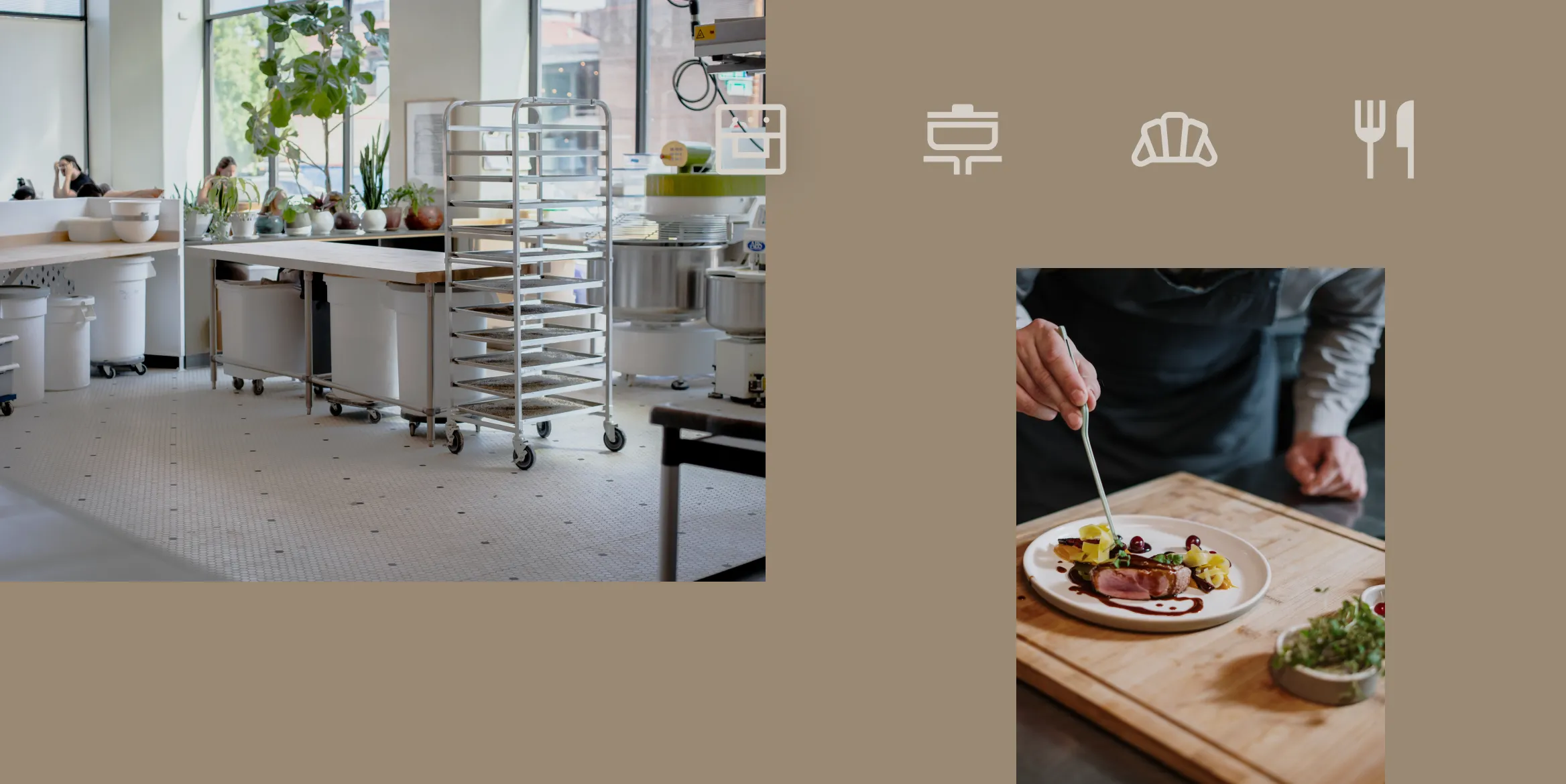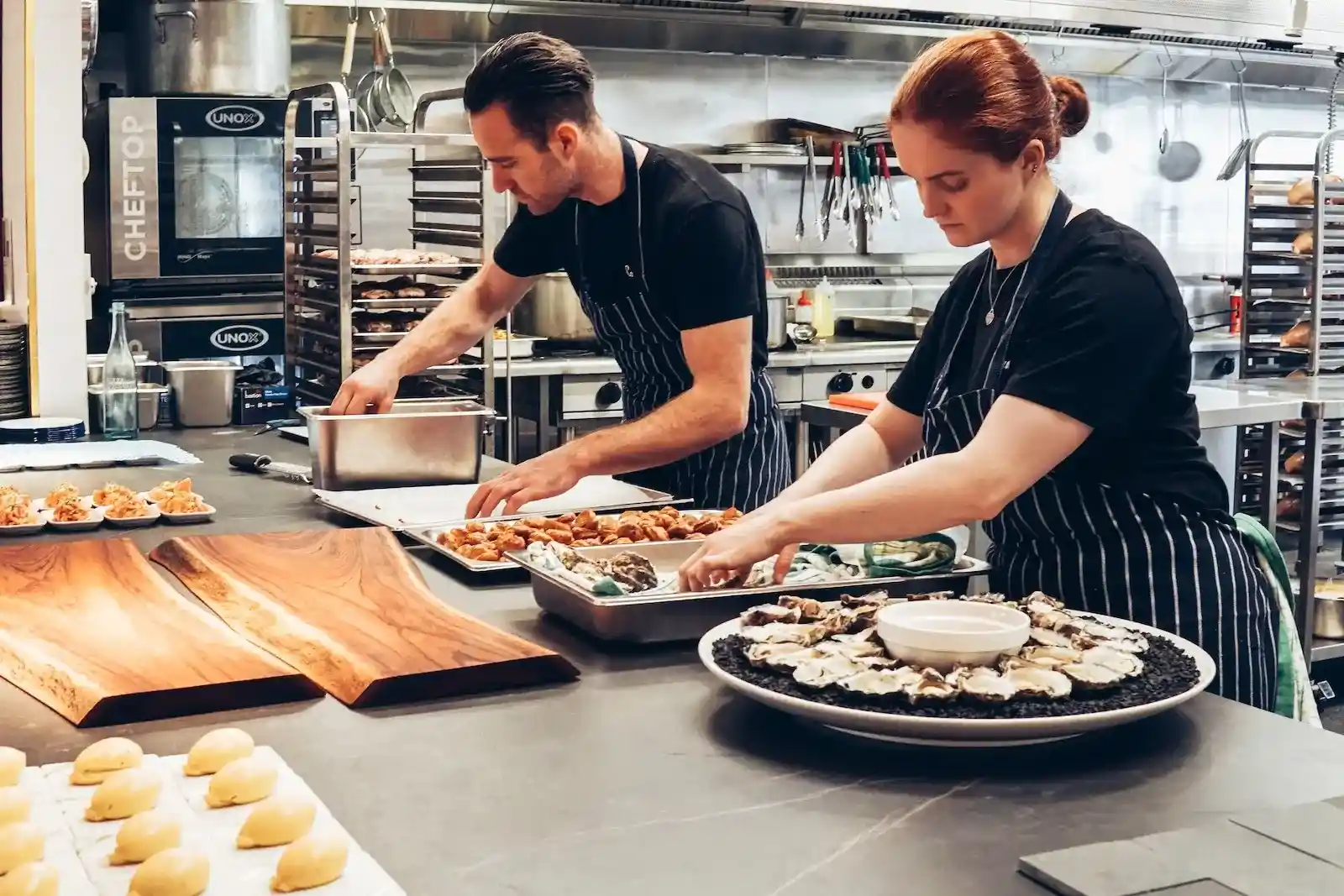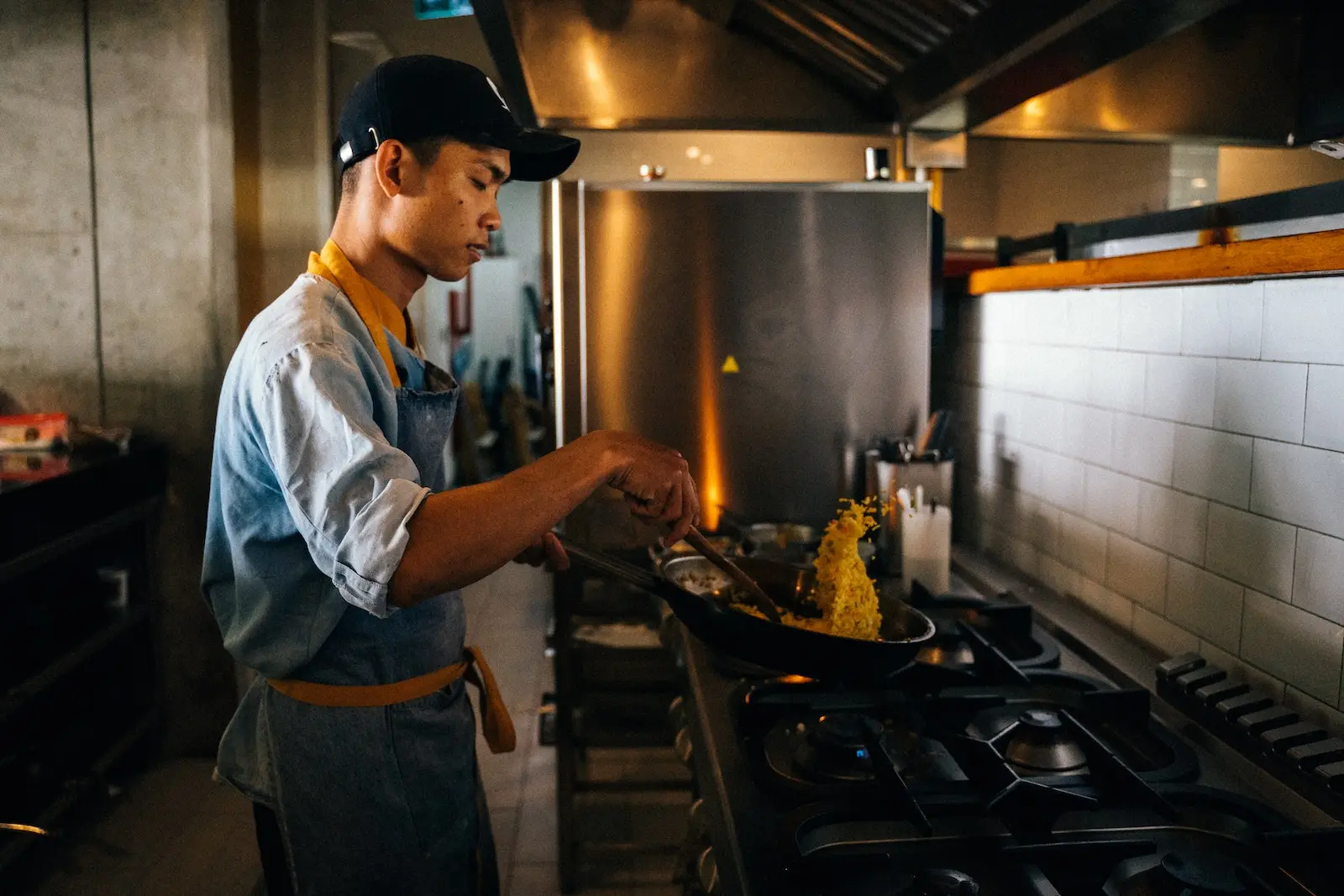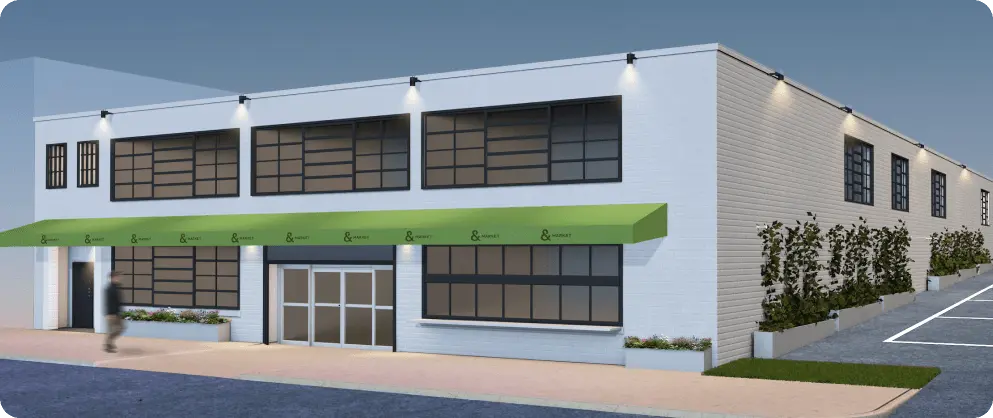
Shared commercial kitchens are transforming the food industry.
The creative model offers a cost-effective and accessible way for food entrepreneurs to get their business off the ground and expand into larger operations – and in the world of flex spaces, they are one of the original offerings.
In this blog, we’ll explore what a shared commercial kitchen is, who they are for, and how they create a dynamic community for food entrepreneurs.
What is a shared commercial kitchen?
Coworking + Kitchens, also known as a shared commercial kitchen or commissary kitchen, is a professional-grade cooking facility that can help food entrepreneurs start and grow their business.
They offer access to specialized equipment at an affordable cost and are regulated by local health and safety laws, making them a great choice for those who need access to a commercial kitchen, but don’t want to invest in their own.
A brief history of shared commercial kitchens
Shared commercial kitchens have been around for several decades, but have grown in popularity in recent years with the rise of entrepreneurship.
- The first shared spaces in the 1960s were primarily used as a way for small-scale food producers to access licensed and inspected commercial kitchen spaces without having to invest in their own facilities.
- Fast forward to the 90s, they began to expand as a business model, with private companies establishing commercial kitchens that could be rented out to food businesses. They were usually located in urban areas and were used primarily by catering companies or food trucks.
- In the last decade, shared kitchens moved towards targeting budding entrepreneurs. Online platforms like KitchenShare began to connect food entrepreneurs with available kitchen space, making it easier to find and book commercial kitchen facilities on demand.
Today, they are a common feature of the food industry, with hundreds of facilities located across North America.
How are shared commercial kitchens shaping the food industry?

Shared kitchens encourage more entrepreneurship in the food industry, empowering chefs to go out on their own without requiring the support of massive corporations.
While before, food entrepreneurs were largely dependent on large corporations or needed to invest in their own facility in order to start a business, now they are free to operate more independently.
In turn, these kitchens make entrepreneurship more accessible, while promoting a more collaborative and sustainable food ecosystem.
Who are commissary kitchens for?
Commissary kitchens are best for small-scale food businesses or entrepreneurs that are looking to take their business to the next level.
Here is a list of some of the most popular users of shared commercial kitchens:
- Small-scale food producers: such as bakers, chocolatiers, and artisanal food makers, who need a licensed kitchen to produce and package their goods.
- Entrepreneurs and startups: that are looking to launch a food business but don’t have the capital to invest in their own commercial kitchen facilities.
- Food trucks and mobile food businesses: that need access to a licensed commercial kitchen to prepare their food.
- Catering companies: that require additional kitchen space for large events or to expand their operations.
- Pop-up restaurants: and supper clubs that want to test out new concepts or hold temporary events.
- Nonprofit organizations and community groups: that want to provide access to licensed kitchen space for food-related initiatives and programs.
The affordability and accessibility of shared commercial kitchens make them a great place for food businesses of all kinds to come together.
Benefits of shared commercial kitchens

Much like micro-gyms and other coworking and flex niches with specialized equipment, shared commercial spaces offer professional-level, high-quality equipment and space at an affordable cost. Below are a few more benefits that shared kitchen spaces offer.
- Affordable and cost-effective solution: a more affordable alternative to investing in your own commercial kitchen facilities, as you only pay for the time and space you need.
- Access to professional-grade equipment: equipped with high-quality appliances, utensils, and tools, which can be expensive to purchase and maintain on your own.
- Health-code compliant: regularly inspected and maintained, ensuring that health and safety standards are met, reducing the risk of foodborne illness or other hazards.
- Access to licensed facilities: fully licensed and inspected by health authorities, providing entrepreneurs with the necessary permits and certifications to operate legally.
- Kitchen staff and support on hand: sometimes may come with support staff that can be used as needed to assist in cooking activities.
- Community of like-minded professionals: provide opportunities for entrepreneurs to collaborate, network, and share knowledge, ideas, and resources.
- Flexible scheduling: offer flexible scheduling and membership opportunities, allowing entrepreneurs to use the space on a part-time or as-needed basis, depending on their business needs.
For these reasons, commissary kitchens are the ideal choice for small-scale food operators looking to get their business off the ground.
Types of shared kitchens

Not every shared kitchen is exactly the same. There are typically four different kinds that you may come across in your search, each dictated by the layout.
Understanding the different kinds of kitchen layouts and what each layout is best for will help you select the right one to own or visit.
- The Assembly Line layout: consists of a straight line of stations where food is prepared and assembled in a sequence.
This is the most popular layout used in fast-food restaurants. It allows for a consistent and efficient workflow and is best for high-volume production and uniformity of food items.
- The Island layout: features a central cooking area, or “island,” surrounded by prep, cleanup, and serving stations.
This layout provides a more open and collaborative workspace, but also requires a lot of space and may not be suitable for smaller kitchens.
- The Zone-style layout: typically used in large restaurants, where each station has its own designated area or “zone” to work in.
It typically allows for greater specialization and organization among kitchen staff but also requires careful planning and management to ensure that each station is properly equipped and supplied.
- The Galley layout: a linear kitchen layout that places all the stations against a single wall or two opposite walls.
This layout is ideal for small or narrow kitchens, such as those in food trucks or boats. It optimizes the use of space and can accommodate a range of equipment and stations, but it may not be suitable for larger kitchens with high-volume production.
Example of a shared commercial kitchen
Optix is proud to power shared commercial kitchens throughout North America. Hear it from one of our clients who is helping to shape the food industry.
&Market Kitchens

&Market Kitchens is a coworking kitchen and food hall opening soon in Washington, DC. It’s designed to be a space where “chefs and food businesses can access commercial kitchen space as easily as signing up for coworking office space”.
They serve a wide variety of food businesses and entrepreneurs including caterers, food trucks, personal chefs, meal prep businesses, and small restaurants looking to get their start.
“We established &Market Kitchens with the purpose of providing food entrepreneurs in DC a safe, health-compliant, and premier coworking kitchen space. By offering an affordable, flexible, and "ready-to-move-in" commercial environment, we aim to empower these culinary innovators to thrive in the region's diverse and dynamic food scene.”&Market Kitchens
The shared kitchen business model
Shared commercial kitchens exist under the brand of flex space, which borrows from the coworking business model.
This means the primary way that shared kitchens make money is through selling space and access to chef-grade kitchen equipment.
Here is an example of membership pricing at a shared commercial kitchen space:
| Full-time membership access | 40 hr/wk | $2,300/mo |
| Part-time membership access | 20 hr/wk | $1,575/mo |
| Starter membership | 40 hr/mo | $1,025/mo |
Here, the membership includes access to the commercial kitchen space, all equipment, and facilities, an online portal for co-op food purchasing, networking, education, and more.
Shared kitchens and coworking spaces
Selling space isn’t the only thing commissary kitchens and coworking spaces have in common. Here’s a list of a few more things they share:
- Cost-effective for entrepreneurs to grow their businesses
- Rely on shared resources
- Offer flexibility
- Encourage collaboration and community-building
- Are better managed with the use of technology and space management software
It’s no wonder then why the two concepts go hand-in-hand. For that reason, it’s important to keep this trend on your radar.
As the popularity of shared kitchens continues to grow, they will continue to be an important platform for food entrepreneurship and a key driver of the industry’s transformation.
Are you looking to start a shared commercial kitchen? Want to learn how you can better manage your shared kitchen space with the help of software? Book a demo with a member of our team today to learn more about how Optix can help you manage, measure, and grow your space.




